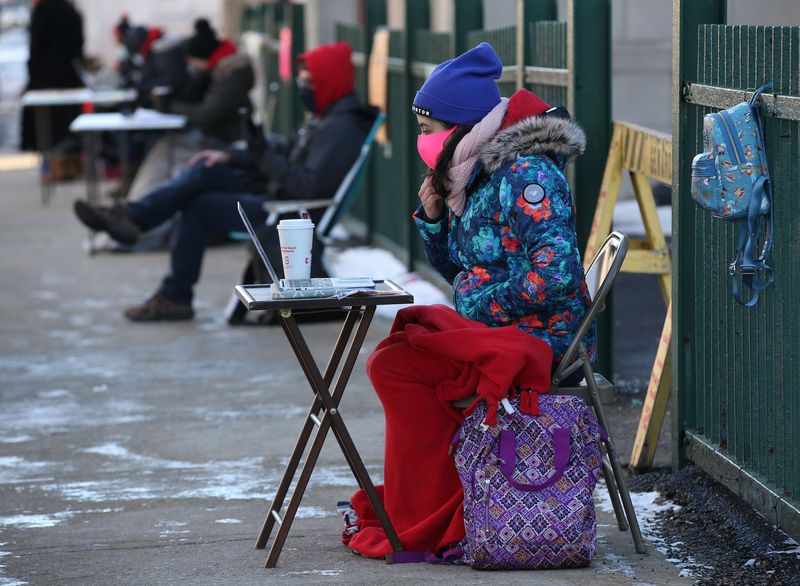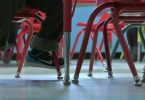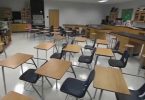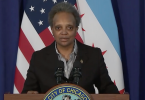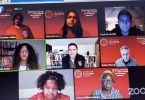A lot happened over the weekend between Chicago Public Schools and the Chicago Teachers Union.
And a couple things did not happen.
One: Teachers did not refuse to show up for work Monday, despite how some critics are framing the weekend’s developments. A majority of the CTU — which includes teachers, social workers and nurses — voted to continue working remotely, despite the district ordering them back into classrooms Monday to prepare for elementary students to return to schools on Feb. 1.
If you have a kid who’s remote learning in your house (I have two) or a kid who receives therapy remotely or you’ve ever had a telehealth appointment, you know that teachers, social workers and nurses are very much working when they work remotely. Most of them have been working this way since March, calibrating and pivoting and problem-solving to account for a pandemic that just won’t quit.
Two: Parents and educators, grappling with safety concerns and academic concerns and mental health concerns, did not become responsible for keeping the population of Chicago growing at a healthy pace.
Asked on Sunday about the CTU’s vote, Mayor Lori Lightfoot said she’s concerned that the impression of instability within CPS will send families packing.
The city needs to be “growing our population, not shrinking it,” Lightfoot said.
I suppose that line of thinking would make sense to me if the vast majority of CPS families were clamoring for in-person learning — if a survey went out asking CPS families whether they’re comfortable sending their kids back into classrooms at this point in the pandemic and some 60% or 70% or 80% answered yes.
Then, I suppose, a school district that doesn’t allow for that option could be seen as a possible hindrance to the city retaining families. (Although, I’d still find it to be a stretch, given that many suburban schools — Joliet School District 86, the fourth-largest elementary school district in the state, and Evanston Township High School, for example — are remaining remote.)
________
Columns are opinion content that reflect the views of the writers.
________
But the vast majority of CPS families, when given the chance to return to school buildings, opted to continue remote learning. About 37% of families said they planned to send their kids back into classrooms in these first two waves of reopenings. Just 19% of students who opted into the Jan. 11 wave of in-person instruction showed up.
That doesn’t have me picturing a mass exodus of families, fleeing Chicago for greener, in-person learning pastures.
It’s also worth noting that the educators fighting for the right to continue remote learning are Chicago residents — and mandated to be so. Should we be worried about them packing up their families and moving to a place where they aren’t being forced into classrooms during a pandemic?
Honestly, I don’t think any of us — CPS families, CPS educators, elected officials — should be worried right now about who’s moving where. At least not above and beyond keeping people safe from a virus that has killed more than 400,000 Americans so far.
My CPS high-schooler doesn’t have the option of returning to her school building yet. My CPS sixth-grader could go back on Feb. 1, and I’m not sending him. My reasons are, in order:
One: I’m worried about contributing to community spread — inadvertently sending a potentially deadly virus into a building filled with his peers and teachers and school staff, or inadvertently bringing it home. Countries across Europe are starting to shut down schools again, given emerging evidence about the new, more contagious variants of COVID-19 and kids’ role in spreading it.
Two: I would not feel comfortable returning to my workplace right now, and I’m grateful that my company gives me the option of continuing to work remotely. I don’t feel right asking educators to do something I don’t feel comfortable doing myself.
Three: Other families are struggling with remote learning more than mine, for any number of reasons — work schedules, children’s particular needs and learning styles, you name it. By keeping my son home, I feel like I’m leaving one more space in a classroom for those families and, in doing so, cutting down on their exposure to one more kid and his various contacts.
All the CPS families I talk to — whether they learn there, work there or both — have worked through complicated, thoughtful, valid calculations when deciding whether to return to classrooms. None of them include Chicago’s population trends. All of them include the well-being of children.
The next few days and weeks are going to get tense, as CPS and CTU continue negotiations and families continue trying to learn and work and live through a pandemic.
My plea, to everyone with skin in this game, is that we acknowledge these are incredibly difficult, multilayered decisions, that we resist the easy temptation to demonize each other and that we keep the discussion focused on what’s in the best, safest interest of kids and the educators tasked with teaching and shaping and sending them into the world.
Join the Heidi Stevens Balancing Act Facebook group, where she continues the conversation around her columns and hosts occasional live chats.
Twitter @heidistevens13

